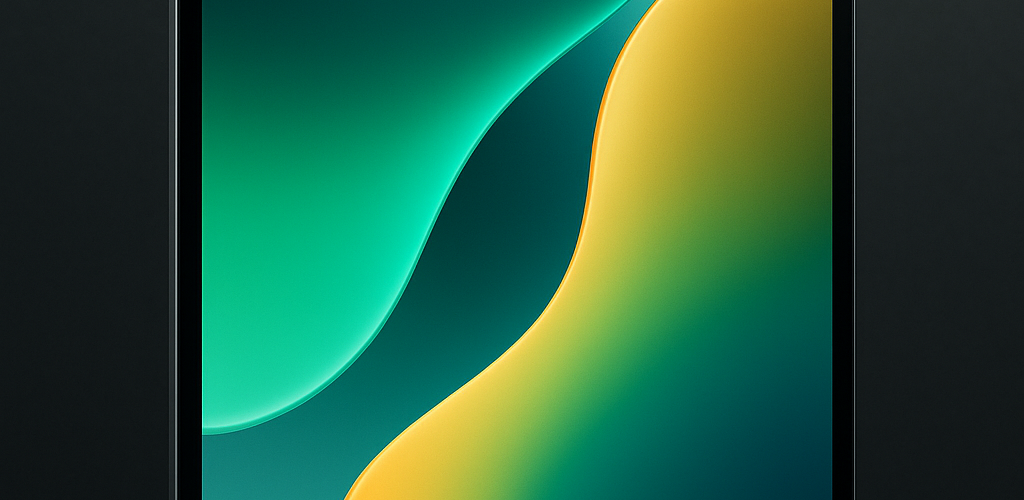OnePlus Pad 3 Review: Power, Productivity, and More

OnePlus has stepped up its tablet game in 2025 by launching the OnePlus Pad 3, aiming to challenge Apple’s iPads and Samsung’s premium Tab series. With a larger display, an ultra-slim design, flagship chipset, and AI-powered software, OnePlus intends to deliver a productivity-centric Android tablet that feels both powerful and premium.
OnePlus introduced the Pad 3 globally on June 5, 2025. It reached markets across Europe, North America, and the UK, though India awaits an official release date. With this launch, OnePlus continues its strategy to build a comprehensive ecosystem, bringing tablets closer to the center of smart device usage.
2. Design and Build: Slim Yet Substantial
OnePlus designed the Pad 3 with elegance and portability in mind. The device measures just 5.97 mm in thickness and weighs around 675 grams. Despite the large 13.2-inch screen, the tablet feels balanced in the hand and remains light enough to carry around all day. The metal unibody construction adds a touch of luxury while ensuring durability.
The company offers two muted color finishes—Storm Blue and Frosted Silver. While the minimalist design appeals to professionals, it may come off as slightly dull to users who prefer vibrant aesthetics.
The slim profile, though attractive, does raise some concerns about durability under pressure. However, OnePlus seems to have struck a good balance between form and function.
3. Display: Expansive, Crisp, and Responsive
OnePlus equipped the Pad 3 with a stunning 13.2-inch LCD panel that offers a 3.4K resolution (3392×2400), a 144Hz refresh rate, and 12-bit color depth. The 7:5 aspect ratio enhances vertical space, making it ideal for split-screen use, multitasking, and creative work.
Users praised the display’s sharpness and fluid scrolling. Text looks crisp, colors appear vibrant, and motion remains silky smooth. The tablet performs exceptionally well in tasks like video editing, reading, and gaming. Even without OLED technology, the screen delivers rich contrast and strong brightness, which makes it suitable for both indoor and outdoor usage.
4. Audio: Surround Sound Comes to Life
OnePlus paid serious attention to sound with an eight-speaker system that includes four woofers and four tweeters. The result is immersive, room-filling audio. Whether users stream movies, attend video calls, or play high-intensity games, the soundstage remains loud, clear, and detailed.
This setup outperforms most competitors in the Android tablet space and challenges even Apple’s iPad Pro in speaker quality. The strategic speaker placement ensures stereo clarity in both portrait and landscape modes.
5. Performance: Blazing Speed and Multitasking Muscle
OnePlus chose Qualcomm’s Snapdragon 8 Elite chipset for the Pad 3, currently one of the most powerful mobile processors available. Benchmarks show CPU and GPU improvements of over 40% compared to last year’s flagship chipsets. Multitasking feels effortless, apps open instantly, and even heavy gaming remains stutter-free.
The base variant ships with 12GB of LPDDR5X RAM and 256GB of UFS 4.0 storage. A higher-end configuration offers 16GB RAM with 512GB storage, providing ample headroom for creators and professionals. Thanks to UFS 4.0, file transfers and app loading times feel lightning-fast.
OnePlus also installed a vapor chamber cooling system that uses graphene to keep temperatures under control. Users noticed that even after extended gaming or rendering sessions, the Pad 3 stayed surprisingly cool.
6. Software Experience: AI and Efficiency Combined
Running on OxygenOS 15, which is based on Android 15, the Pad 3 offers a refined user experience optimized for large screens. OnePlus introduced several multitasking tools under a feature set called Open Canvas, which lets users run up to three apps side by side, resize windows freely, and drag and drop content across apps.
The software includes integrated AI tools like “AI Writer,” “Summarize,” and “Circle to Search.” These tools boost productivity by helping users generate content, condense long articles, or quickly search context from the screen.
O+ Connect creates seamless interaction between the Pad 3 and OnePlus smartphones and laptops. Users can share files, mirror their phone screen, or even control their Mac from the tablet. The Pad 3 also comes with stylus and keyboard support (sold separately), transforming it into a capable laptop replacement.
OnePlus promises three years of OS upgrades and six years of security patches, which adds long-term value.
7. Battery Life and Charging: Unmatched Endurance
OnePlus equipped the Pad 3 with a 12,140 mAh battery, the largest it has ever used in a tablet. The device easily lasts:
- Over 15 hours of web browsing
- Nearly 12 hours of productivity work
- Around 7.5 hours of 4K video playback
Gamers also enjoy extended playtime, with the device lasting over 11 hours on high performance settings.
The 80W SuperVOOC fast charger refuels the battery in just over 80 minutes. Charging for only 10 minutes restores nearly 20% battery, making it ideal for quick top-ups during meetings or travel.
8. Cameras: Functional, Not Fancy
The Pad 3 includes a 13MP rear camera and an 8MP front camera. Both serve basic needs like document scanning, video calling, and occasional photography. The rear camera supports 4K video recording, while the front camera captures decent selfies and stable HD video.
Although the camera hardware lacks flagship features, it covers all essential use cases without issue.
9. Missing Features: Room for Improvement
Despite its many strengths, the Pad 3 skips a few expected features:
- No fingerprint scanner: Users must rely on facial recognition or PIN/passwords.
- No cellular support: The Pad 3 lacks LTE or 5G versions, limiting portability for remote professionals.
- No IP rating: Without water or dust resistance, users must handle it with care outdoors.
These omissions might not matter for everyone, but they could prove inconvenient for users who demand full flagship functionality.
10. Competitive Landscape and Value
Compared to other high-end tablets:
- Against iPad Pro: The Pad 3 offers a more affordable option with competitive multitasking, better battery life, and similar performance—but falls behind on biometrics and display tech.
- Against Samsung Galaxy Tab S10 Ultra: The Pad 3 wins in battery life, audio, and price, while Samsung edges ahead in display quality and ecosystem integration.
- Against Xiaomi Pad 7 Pro: Xiaomi delivers sharper HDR visuals and a lower price, but OnePlus provides a better chipset, software polish, and long-term update promise.
At €599–€699, the Pad 3 undercuts most rivals while offering premium features, making it a strong value choice.
11. Final Verdict: A Top-Tier Android Tablet That Earns Its Place
OnePlus has delivered an impressive all-around Android tablet with the Pad 3. It balances raw power, elegant design, and smart software in a package that satisfies productivity users, gamers, and casual consumers alike. With standout features like AI integration, exceptional battery life, and best-in-class speakers, the Pad 3 doesn’t just compete—it leads.
Users seeking a premium tablet experience without the Apple price tag will find OnePlus Pad 3 to be a compelling and complete choice. Just factor in the need for accessories and note the missing features if they matter to you.













